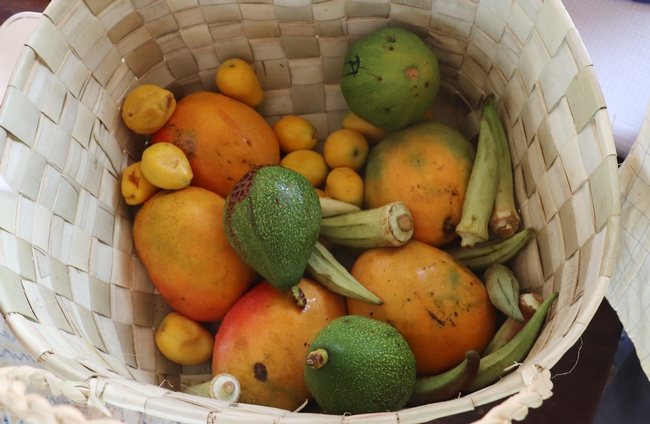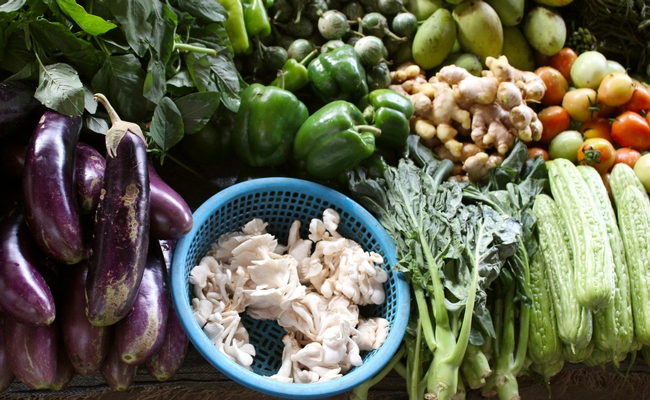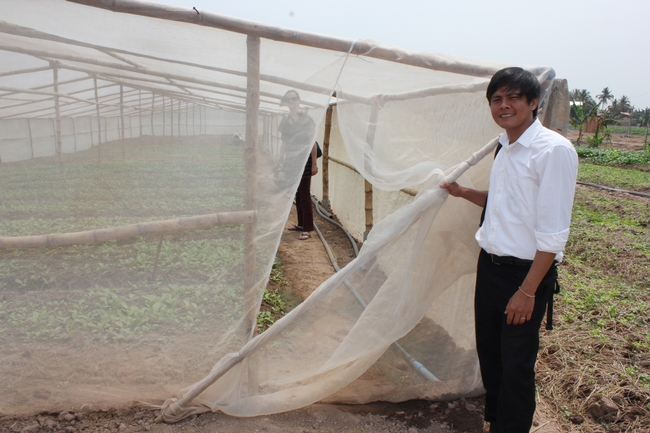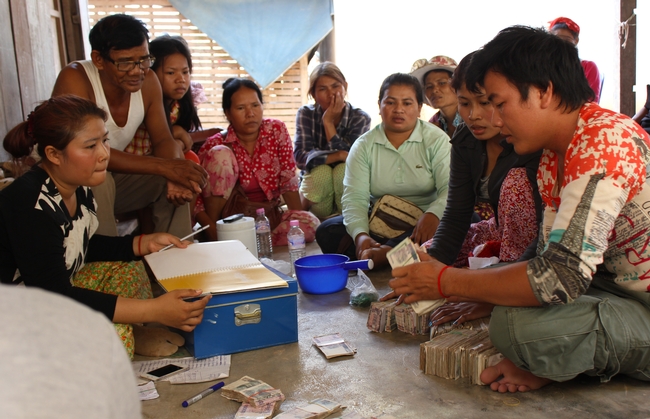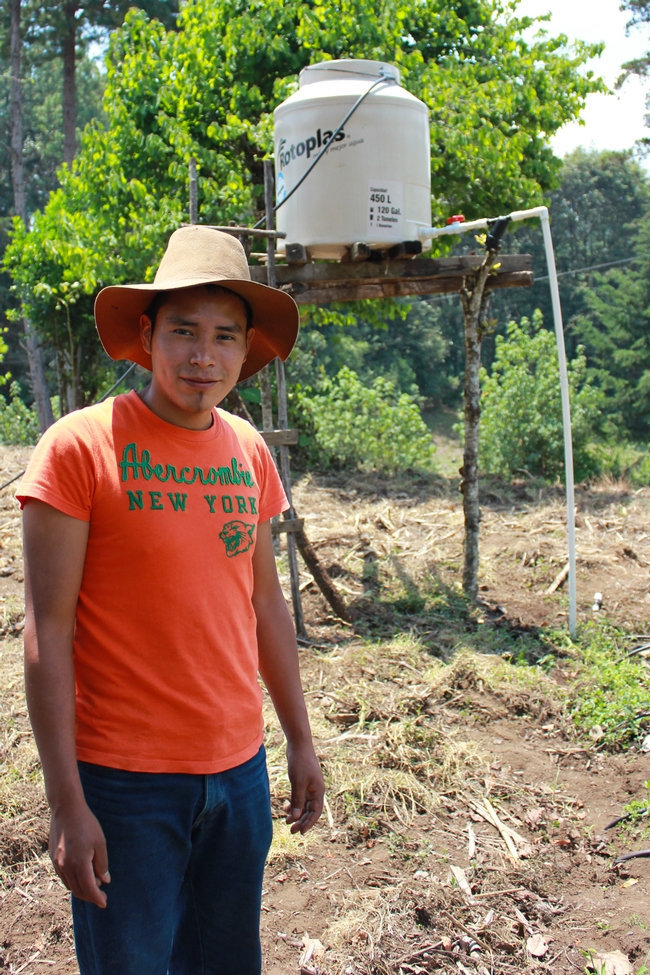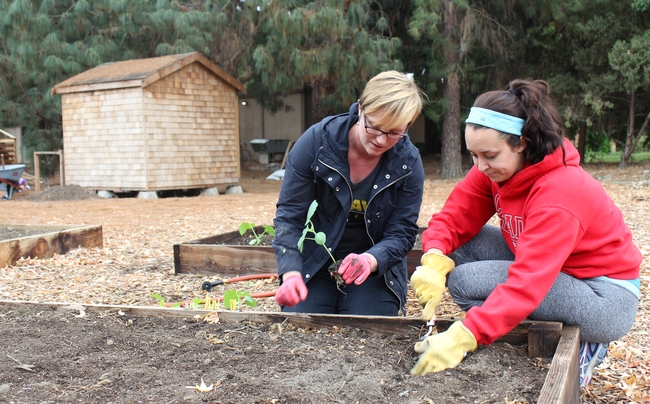Posts Tagged: international development
Making the case for fruits and vegetables
Why do you love fruits and vegetables? Is it their bright colors? Their many shapes and varieties, the way they can makeover your plate with the seasons? The opportunity to taste local terroir in a very fresh bite of fruit or forkful of salad?
Is it more about the juiciness, crunchiness or succulence?
Or do you think more about nutrition? About vitamins, micronutrients and fiber, after decades of being encouraged to eat “5 A Day” to be healthy? Is it about that feeling of righteous virtue when you fill half your plate with fruits and vegetables — and know you're earning a gold star for eating right?
The importance of eating fruits and vegetables has been making headlines again recently, with studies refocusing on the concept of “nutrition security” in a changing climate and pushing for an emphasis on nutrient consumption. The EAT-Lancet commission — while mostly garnering headlines in the United States related to reduced meat consumption — also recommended a diet that would require almost every global region to increase its consumption of fruits and vegetables to meet healthy diet goals.
But there's another reason to love fruits and vegetables that might not be as obvious. Here's a 30-second video clip of what a young farmer in Uganda had to tell me about vegetables, when I had the chance to meet him last year:
“There's no quicker source of getting money in town,” Boaz Otieno explained, when discussing why he chose to farm instead of going to town to find a job. He also talked about the concept that he could grow vegetables like tomatoes on a smaller plot of land and earn as much for those tomatoes as a larger plot of corn or cassava.
"You might even grow (tomatoes) twice while the cassava is not yet harvested, so there's a lot of money in horticulture," he said.
Otieno is a farmer who was also working as a site coordinator for a research project led by Kate Scow in Uganda, which was supported by the Horticulture Innovation Lab, the USAID-funded research program that I work for at UC Davis. Elizabeth Mitcham, director of the Horticulture Innovation Lab and a UC Cooperative Extension specialist, often talks about the “double-duty impacts” of fruits and vegetables, as these crops can be a tool to achieve two major global goals: improving nutrition and reducing poverty.
And it's not just one farmer's opinion that horticultural crops can yield higher incomes. In a white paper about aligning the food system to meet fruit and vegetable dietary needs, the authors pointed out that data from Africa and Asia have shown farmer profits per hectare 3-14 times higher when growing vegetables versus growing rice. The paper also points out that USDA estimates fruits and vegetables account for 23 percent of production value in American agriculture, grown on less than 3 percent of the country's agricultural land. And here in California, fruits and vegetables are a $20 billion industry.
Later this month, the Horticulture Innovation Lab will be hosting a conference in Washington, D.C., focused on making the case for fruits and vegetables with the theme, “Colorful Harvest: From Feeding to Nourishing a Growing World.” The conference will bring together decision makers, international development practitioners, and researchers from universities across the United States, Africa, Asia and Central America to discuss how horticultural innovations can advance global issues of food security, food waste, gender empowerment, youth employment, malnutrition, and poverty reduction.
While the conference speakers and participants will be diverse, we're also working to bring farmers' voices — like Otieno's — into the conference with video clips from our partners in Nepal, Honduras, Rwanda and elsewhere, to explain what exactly it is that makes them love fruits and vegetables.
More information:
- Conference info: Colorful Harvest: From Feeding to Nourishing a Growing World
(Check the conference webpage for more videos and presentation info after the event.) - White paper: Aligning the Food System to Meet Dietary Needs: Fruits and Vegetables
- More about the Horticulture Innovation Lab
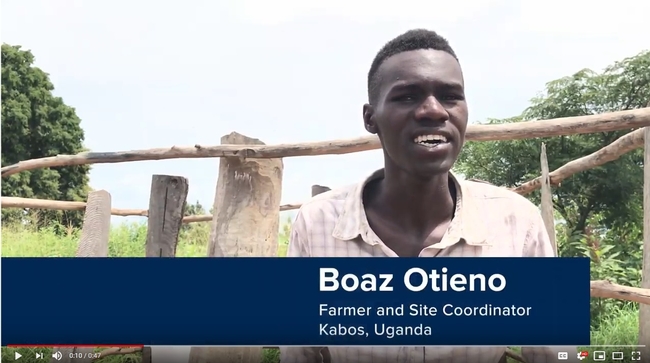
Watch a short video clip on what Boaz Otieno likes best about vegetables: https://youtu.be/aEu9BgL9aH4
Building trust in food systems – here and in Cambodia
What is the role of trust in our food system? Here in the United States, our trust in food is often implicit. We can generally trust that the fruits and vegetables we buy at a grocery store or farmers market are safe to eat — and we are often free to shop without even thinking about that trust.
Between farmers and agricultural scientists too, trust often plays an important role. If you're a farmer, you need to be able to trust that investing your time or money in a new technique or in attending a workshop will indeed improve your business.
But it can be easy to forget that trust is a critical first step in many of these agricultural relationships.
Establishing trust between actors in a food system has been critical for a Horticulture Innovation Lab project in Cambodia, focused on increasing the amount of safe vegetables available to Cambodian consumers. Project leaders from UC Davis and UC ANR — Glenn Young, Jim Hill, Cary Trexler, David Miller and Karen LeGrand — are actually traveling right now in Cambodia to launch a new phase of this project. They are partnering with scientists from Cambodia's Royal University of Agriculture and the University of Battambang. The researchers plan to expand upon their past successes, working together with farmers, marketers, and input suppliers to build trust while building safe vegetable value chains.
One key to their past success was that before introducing farmers to new agricultural technologies, the researchers first connected with farmers socially, by starting community savings groups. In these savings groups, farmers could build relationships and trust, while increasing their own savings and accessing small loans.
This social aspect of the project was the focus of a video made by UC Davis graduate students Thort Chuong, Elyssa Lewis, and Katie Hoeberling. This 3-minute video was a finalist in the World Food Day Video Challenge:
Building trust and resilience in a safe vegetable value chain in Cambodia Interviews for the video were conducted as part of a student thesis and supported by the U.S. Borlaug Graduate Research Fellowship program.
Though he is now studying at UC Davis as a Fulbright Fellow, Chuong was originally hired to work with farmers on the first phase of this project in Kandal province as an agronomist and field facilitator.
“At first I just wanted to focus on the agronomy part,” he said. “But then I saw the advantages of being a [savings group] member and thought, wow, this is a great thing to do.”
In fact the advantages were so great that on the weekends he returned to his hometown, gathering his neighbors and relatives together to start their own savings groups. Members have a safe way to save money, an easier way to secure small loans, and earn a little interest too.
Farmers in these savings groups were able to save considerable amounts of money and provide loans to each other for things like seeds, field preparation, labor costs, school fees, wedding costs, even in one case a new house — with each member contributing $5-25 per week for a year.
With trust and community established, some of the farmers in the savings groups also decided to try out a new agricultural technology in partnership with the scientists, using nethouses for pest management to avoid spraying pesticides. (In many countries where pesticide information is inaccessible to the average farmer, it is not uncommon for farmers to keep a separate garden to feed their family — in order to avoid eating even their own crops that they are selling to the market.)
The new, safe vegetable value chain they were part of grew and strengthened, as the international team connected these farmers to a marketer who needed to source vegetables grown without pesticides. That marketer then sells those vegetables to consumers in the capital city of Phnom Penh, who were able to trust the vegetables they bought from her are indeed safe to eat.
The Horticulture Innovation Lab is led by a team at UC Davis, with funding from the U.S. Agency for International Development, as part of the U.S. government's global hunger and food security initiative called Feed the Future. Learn more about Horticulture Innovation Lab researchers and their projects in Asia, Africa and Central America.
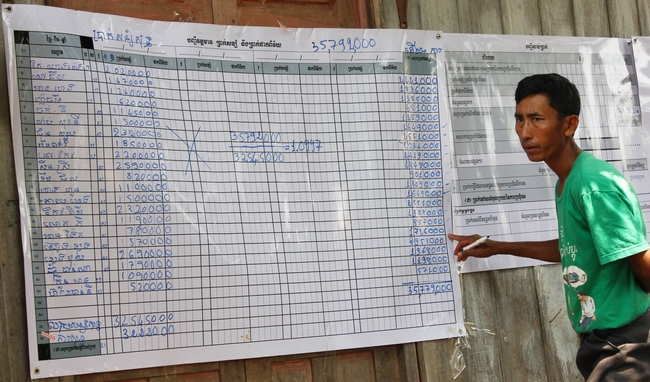
As the savings group secretary, Nov Keo tallies up the year's total savings, loans, and interest during the end-of-year ceremony. He was also one of the first farmers to try using a nethouse to grow "safe vegetables" for the Phnom Penh market.
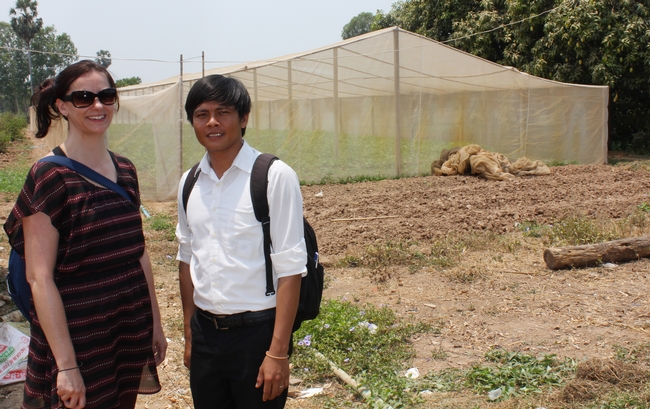
UC Davis researcher Karen LeGrand with Thort Chuong, in front of another farmer's nethouse in Cambodia built after they helped connect scientists, farmers, and marketers with technologies from the Horticulture Innovation Lab.
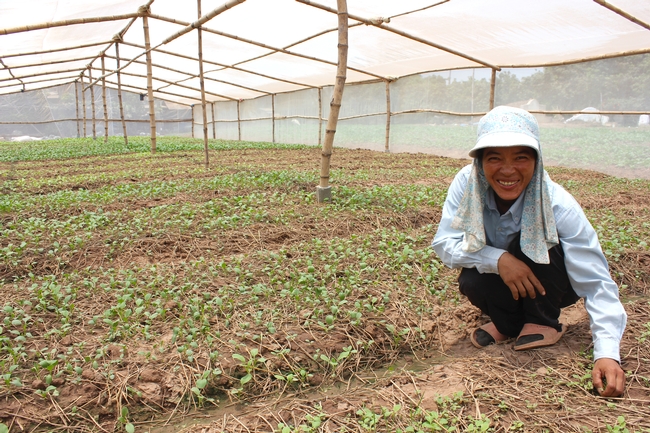
Cheng Sokhim is one of the farmers who started using a nethouse for safer pest control and to earn higher prices for her leafy greens such as kale, Chinese mustard, bok choy and curly leaf lettuce.
More irrigation for climate-smart farming and food security in Guatemala
Connecting 9,000 rural households in Guatemala with improved water management and climate-smart agriculture strategies is the goal of a new project led by a team at UC Davis, to ultimately increase food security and reduce poverty in Guatemala's Western Highlands.
“The opportunity to impact so many farmers' lives on this scale is exciting,” said Beth Mitcham, director of the Horticulture Innovation Lab and a UC Cooperative Extension specialist in the UC Davis Department of Plant Sciences. “We're taking lessons learned from our previous research — in Guatemala, Honduras and Cambodia — and building a team to help more small-scale farmers apply our findings and successfully use these innovative practices.”
The new project is part of the U.S. government's global hunger and food security initiative, Feed the Future. The project represents an additional $3.4 million investment in the UC Davis-led Horticulture Innovation Lab by the U.S. Agency for International Development's mission in Guatemala.
The project's international team also includes representatives from Kansas State University; North Carolina Agricultural and Technical State University; the Centro de Paz Bárbara Ford in Guatemala; Universidad Rafael Landívar in Guatemala; and the Panamerican Agricultural School, Zamorano, in Honduras.
“The learning shared between these three U.S. universities and the universities in Honduras and Guatemala will be enriching for all of the institutions involved,” said Manuel Reyes, research professor at Kansas State University who is part of the team. “I find it satisfying that these academic institutions will be investing intellectually in marginalized groups in Guatemala's Western Highlands — and in turn, learning from them too.”
Helping youth envision a future in agriculture
By partnering with local youth groups and agricultural schools, the team will better prepare students for jobs in commercial agriculture and agricultural extension with knowledge of climate-resilient conservation and water management practices.
“Our local team is training youth as entrepreneurs, to see agriculture as an economic opportunity instead of just back-breaking work,” said Meagan Terry, UC Davis junior specialist who is managing the project in Guatemala for the Horticulture Innovation Lab. “They can envision a future in agriculture, with innovative ways to create value-added products or grow high-value crops for niche markets.”
As rainfall patterns vary with climate change, farmers in this region are expected to face increased competition for water. Practices such as rainwater harvesting, drip irrigation and conservation agriculture will become more necessary for small-scale farmers.
Climate-smart lessons from conservation agriculture, drip irrigation
In previous research, the Horticulture Innovation Lab has found that combining drip irrigation with conservation agriculture practices can successfully grow vegetables on small plots of land, without significant yield reductions. These practices improve soil structure, moisture retention and soil health.
Additionally, women farmers who participated in the Horticulture Innovation Lab studies in Cambodia, Honduras and Guatemala favored using these practices for another important reason: reduced labor in relation to controlling weeds, vegetable bed preparation and manual watering.
“I dream for many women, youth and their families, that their lives will be better off because of 'MasRiego' and the science behind this work,” Reyes said. “As for the research, we are learning how to improve this suite of practices so they can be tailor fitted globally. I am convinced that if this picks up, steep sloping lands can be farmed with the soil quality not being degraded — but even being enriched.”
These lessons, as well as findings from the program's “Advancing Horticulture” report about horticultural sector growth in Central America, lay the foundation for this new project.
A previous version of this article was published by UC Davis News Service and on the Horticulture Innovation Lab blog.
Curious about partnering with the Horticulture Innovation Lab? The Horticulture Innovation Lab builds partnerships between agricultural researchers in the United States and researchers in developing countries, to conduct fruit and vegetable research that improves livelihoods in developing countries. The program currently has three research grant opportunities for U.S. researchers: one focused on tomatoes, another on apricots, and a third on integrated crop-livestock systems.
How one farmer’s invention is reducing postharvest losses around the world
In many developing countries, more than half of all fruits and vegetables are never eaten, but instead are lost, damaged or spoiled after harvest. These “postharvest” losses can mean that farmers need to sell their fresh produce as soon as it is harvested for whatever price they can get, before they lose the crops that represent investments of labor, water, and agricultural inputs. Improving how fruits and vegetables are handled after harvest can significantly prolong freshness — and cooling is key.
“The three most important aspects of postharvest handling are: temperature, temperature, temperature,” said Michael Reid, UC Cooperative Extension postharvest specialist who works with the Horticulture Innovation Lab at UC Davis. “In the developing world in particular, affordable cooling technology is mostly absent.”
Cooling can be expensive — even for American farmers
As a farmer in upstate New York, Ron Khosla knew this problem too well. His vegetable crop was spoiling too quickly, but he could not afford to buy a walk-in cooler for his small farm. So he invented a solution: a small electrical device he called a CoolBot that tricks an air conditioner into getting colder without freezing over, turning a well-insulated room into a cold room at lower costs than refrigeration.
“I was hoping for a cheap, DIY solution that I could maintain. But mostly I just needed to keep my leafy greens and strawberries cold,” Khosla said.
Khosla's CoolBot invention caught the eye of postharvest researchers, including Reid, who saw it in action on farms in California and decided to try using it in developing countries too.
CoolBot goes global with the Horticulture Innovation Lab
In one of his first projects with the Horticulture Innovation Lab (a program led by UC Davis with funding from the U.S. Agency for International Development), Reid partnered with agricultural scientists from Uganda, Honduras and India to test the CoolBot in their climates. The four scientists also tested different local materials as insulation for each of the cold rooms.
Since that first project, the Horticulture Innovation Lab has tested CoolBots for farmer cold storage in Tanzania, Zambia, Uganda, Thailand, Cambodia, Bangladesh, India and Honduras.
Jane Ambuko of the University of Nairobi is another Horticulture Innovation Lab partner who has worked with the CoolBot. She received a grant to pilot this technology with mango farmers for a program called the Kenya Feed the Future Innovation Engine. Her project was featured on an NTV Food Friday news segment about the CoolBot earlier this month.
“I see the CoolBot making a whole lot of difference,” Ambuko said during a TEDxNairobi speech. “But for it to make that desired difference we have to make it cost-effective and affordable for the smallholder farmers.”
Adapting, troubleshooting and scaling up
In many places, the most expensive part of a CoolBot-equipped cold room is the structure for the insulated room, but both Reid and Khosla expect foam building materials to become more widely available and affordable.
In the meantime, Khosla's small business has been growing — selling to not only farmers, but also florists, micro-brewers, and other artisanal food businesses. Now with six employees, the company has sold more than 27,500 CoolBots in 51 countries.
“I'm thrilled and so grateful to be a part of helping lots of people. Working with USAID has gotten us known in other countries, and I'm looking forward to the day when we have enough in-roads in India and Africa where we can work directly with farmers there,” Khosla said. “People didn't believe the CoolBots worked at first. But now we get the most amazing letters from people whose businesses have doubled or quadrupled. Good postharvest care makes such a difference. Once they try it, then they see.”
A previous version of this article appeared in the newsletter for Feed the Future, the U.S. government's global hunger and food security initiative, and also in the Horticulture Innovation Lab blog.
Event - Sustainable solutions and extending California's agricultural expertise to the world: The UC Global Food Initiative and UC Blum Centers will host a Global Food Summit on Sustainable Solutions, May 5-6 at UC Irvine. Elizabeth Mitcham, director of the Horticulture Innovation Lab and UC Cooperative Extension postharvest pomologist at UC Davis, will be speaking about technology transfer for horticulture-related technologies such as the CoolBot, seed drying beads, UC Davis-designed chimney solar dryer, pest-exclusion nets, and other tools the program adapts to the needs of farmers in developing countries. She will also be on a panel with two other UC Davis-based directors of Feed the Future Innovation Labs (UC Davis leads five Feed the Future Innovation Labs with funding from USAID — more than any other university). More info about this event.
How will you celebrate World Food Day?
Each year on Oct. 16, the world takes a moment to raise global awareness of agriculture, hunger, and food issues. World Food Day officially marks the anniversary of the creation of the UN's Food Agriculture Organization (FAO) in 1945, and nowadays it aligns with other global events such as this week's World Food Prize activities in Iowa.
Food and agriculture are central to what UC Agriculture and Natural Resources (UC ANR) professionals deal with every day. We're elbows-deep in solving specific problems like pest identification, childhood nutrition in schools, drought-tolerant plant breeding and spreading sustainable agricultural practices.
World Food Day is a day for all of us to take a step back and look at the bigger picture. Here are some ways that UC ANR faculty are raising awareness on World Food Day this year. How will you join them?
If you're near UC Davis, two free events invite the public to mark World Food Day:
America's Farm-to-Fork Capital Speakers Series offers participants lunch and an in-depth discussion of the connections between soil health, farm health, healthy foods, and the gut microbiome. These themes are particularly pertinent this World Food Day, as it is also the International Year of Soils. Author Daphne Miller will speak about her book "Farmacology" and then join a panel of academics from UC ANR's Agricultural Experiment Station, specifically Kate Scow and Bruce German, moderated by Tom Tomich. The event will be 11 a.m. – 1:30 p.m., Friday, at the Buehler Alumni Center on the UC Davis campus. Event details and registration
The Grand Opening of the Horticulture Innovation Lab Demonstration Center will send participants home with a souvenir vegetable seedling and a closer look at some of the technologies and crops that UC academics work with in developing countries. UC ANR Cooperative Extension specialist and pomologist Elizabeth Mitcham is also the director of the Horticulture Innovation Lab and will be joined by Rep. Ami Bera (D-CA), UC Davis CA&ES Dean Helene Dillard, and others to discuss the work that UC Davis and its international partners do to help small-scale farmers in developing countries. This event is particularly pertinent as this year's theme for World Food Day focuses on how agriculture can break the cycle of rural poverty. The event will be at 2 – 3:30 p.m., Friday, on Solano Field, near Nelson Hall on the UC Davis campus. Event details and information about the new demonstration center
Online this week, you can hear UC ANR academics Dan Sumner and Christine Stewart speaking on a panel at the World Food Prize Borlaug Dialogue, broadcast online via a live stream. They will be speaking 1:30 p.m. PDT, Wednesday, on a panel with UC Davis' Roger Beachy about the UC Davis World Food Center, “Launching a New Initiative - Food for a Healthy World.”
More information about World Food Day can also be found on the FAO website or by browsing #WFD2015 in social media.

